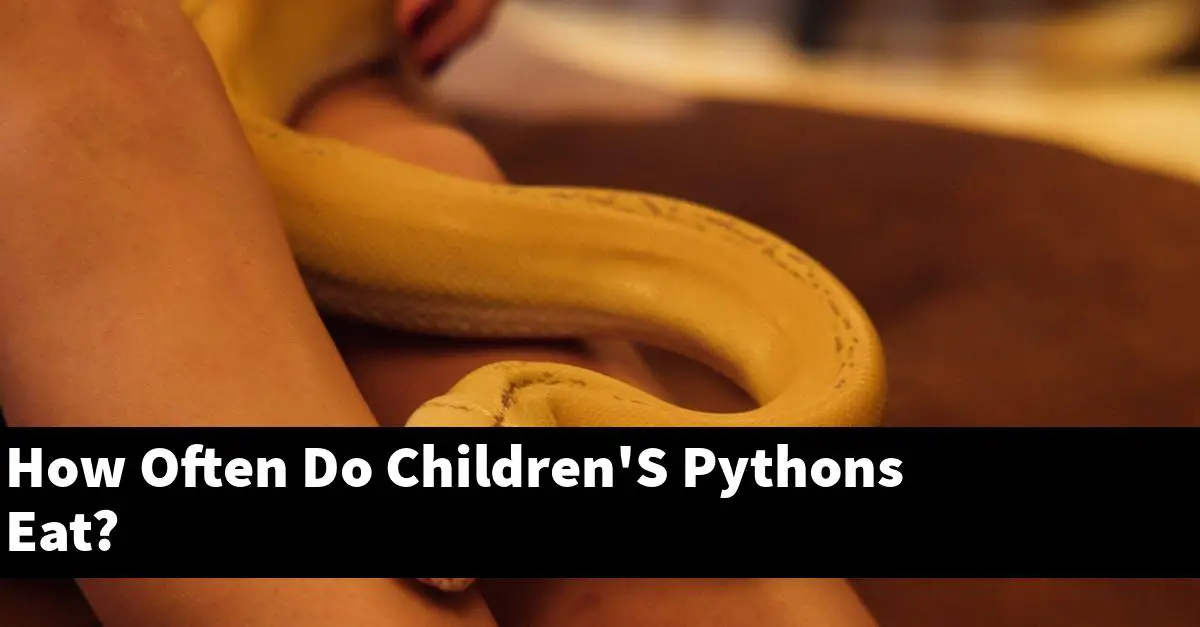Children’s pythons typically eat every one to two weeks.
The article covers the feeding habits of children’s pythons. It discusses how often they need to eat and how much they need to eat each time.
Table of Contents
How often do children’s pythons need to eat?
As a general rule, children’s pythons should be fed every 5 to 7 days. However, this can vary depending on a number of factors, such as the size and age of the python, the temperature of its environment, and whether it is currently in the process of shedding its skin.
If you are unsure how often to feed your python, it is best to consult with a reptile veterinarian or experienced snake keeper.
What are some signs that a child’s python is not eating enough?
A child’s python not eating enough is a serious problem. Some signs that a child’s python is not eating enough include weight loss, lethargy, and refusing to eat. If a child’s python is not eating enough, they may need to be force-fed or have their food supplemented.
What are some possible consequences of a child’s python not eating enough?
There are a few possible consequences of a child’s python not eating enough. One is that the python may become malnourished, which can lead to a number of health problems.
Another possibility is that the python may become aggressive, as it may see food as a scarce resource. If the python is not eating enough, it is important to consult with a reptile veterinarian to determine the cause and to develop a plan to get the python back on track.
How can I ensure that my child’s python is getting enough to eat?
It is important to ensure that your child’s python is getting enough to eat for several reasons. First, if your python is not getting enough to eat, it may become malnourished, which can lead to health problems.
Second, if your python is not getting enough to eat, it may become stressed, which can also lead to health problems. Third, if your python is not getting enough to eat, it may not grow as large as it would if it were getting enough to eat.
There are several things you can do to ensure that your child’s python is getting enough to eat.
- First, you can feed your python live prey. Live prey is a good source of nutrition for pythons and will help ensure that your python is getting enough to eat.
- Second, you can feed your python frozen/thawed prey. Frozen/thawed prey is not as nutritious as live prey, but it is still a good source of nutrition for pythons and will help ensure that your python is getting enough to eat.
- Third, you can supplement your python’s diet with vitamins and minerals. This will help ensure that your python is getting all the nutrients it needs to stay healthy.
If you are concerned that your child’s python is not getting enough to eat, please consult with a reptile veterinarian.
How long can a Children’s Python go without eating?
A Children’s Python can go without eating for quite some time, provided it has a full belly when it stops eating. If a Children’s Python stops eating and has an empty stomach, it will likely only last a few days before it starves to death.
What do Baby Children’s Pythons eat?
Baby Children’s Pythons eat a variety of small prey items. Their diet consists mostly of small mammals and reptiles, but they will also eat birds, amphibians, and invertebrates.
They hunt by ambush, lying in wait for their prey to come within striking range. Once they have seized their prey, they constrict it until it suffocates.
What can you feed Children’s Python?
The diet of these snakes consists mainly of small mammals such as rodents and bats. In captivity, these snakes can be fed a diet of appropriately sized mice or rats.
It is important to ensure that the food items offered to these snakes are not too large, as this can lead to health problems.
Summary
Children’s pythons typically eat every one to two weeks. The article covers the feeding habits of children’s pythons. It discusses how often they need to eat and how much they need to eat each time.


